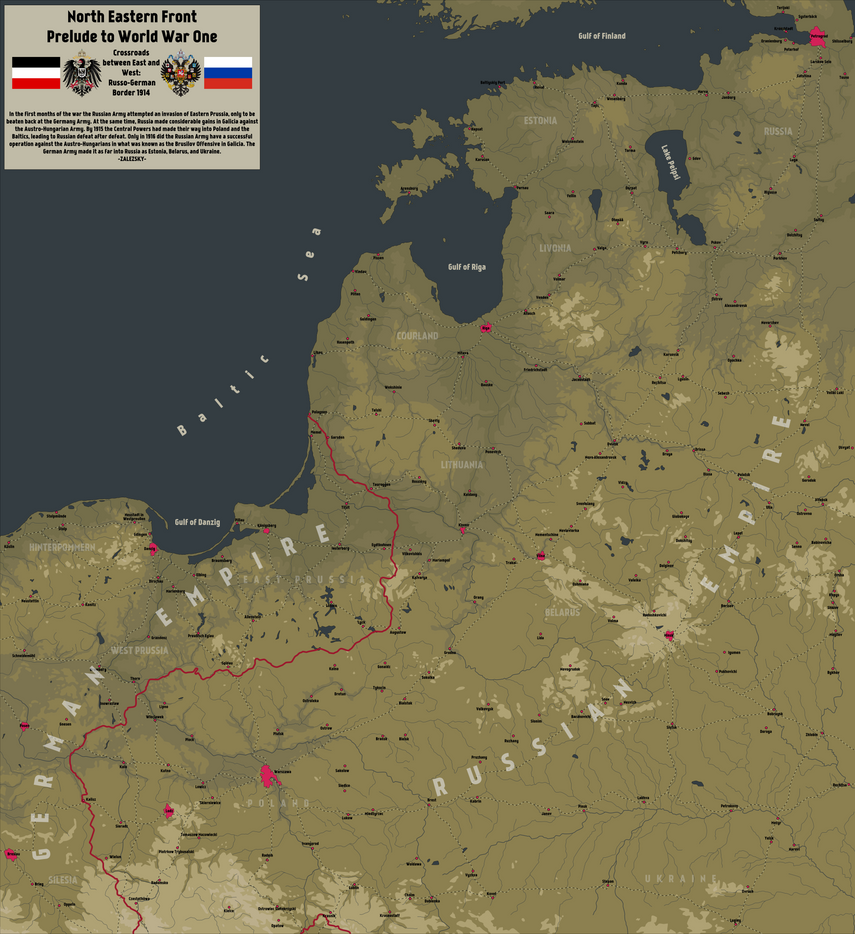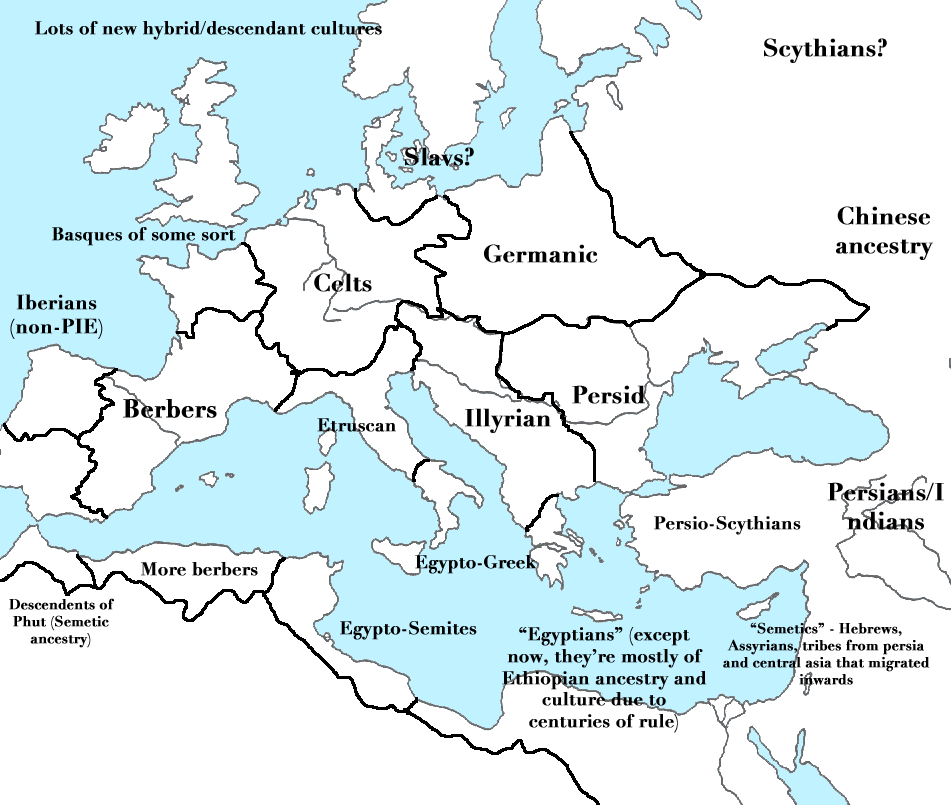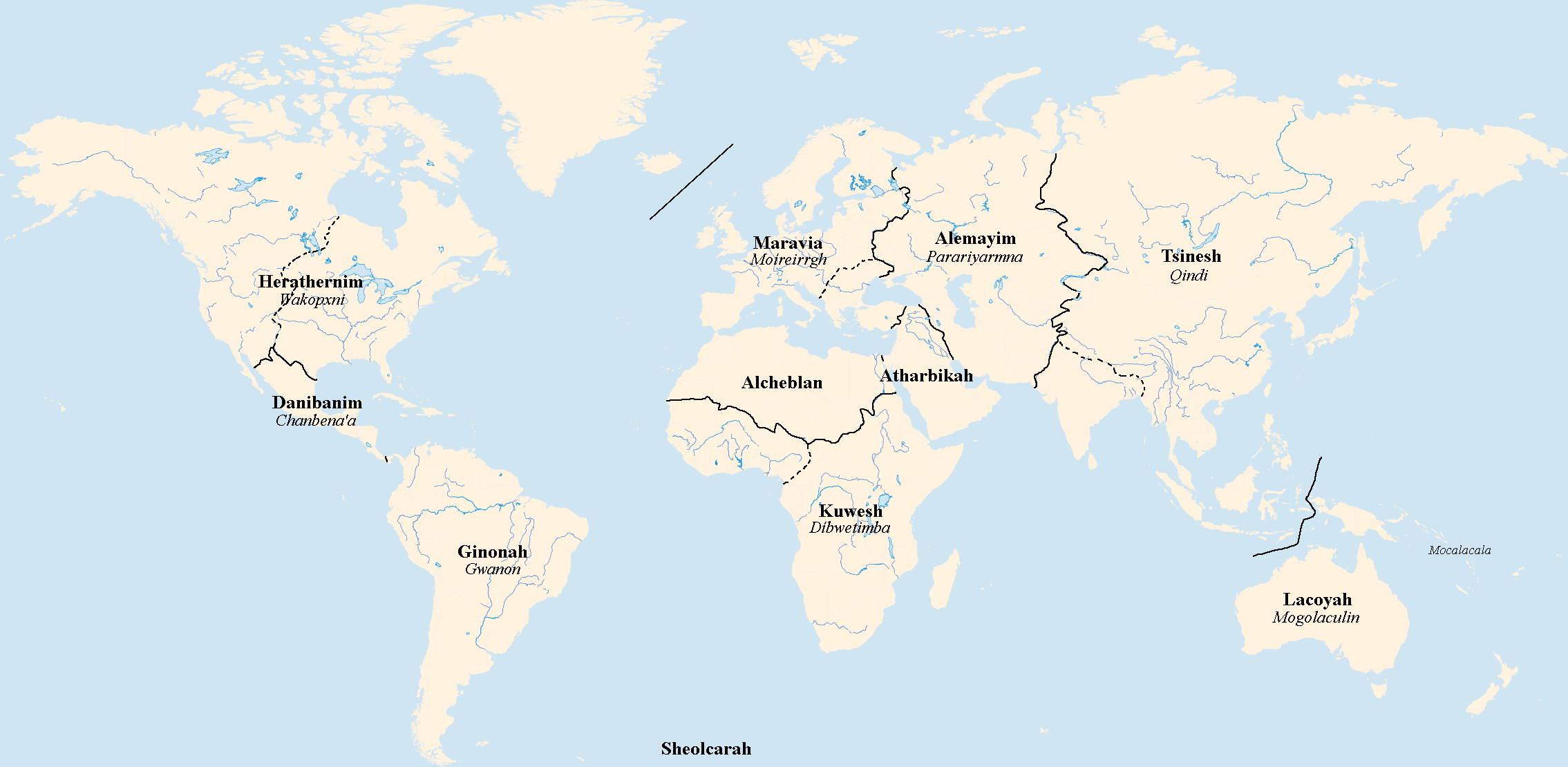You are using an out of date browser. It may not display this or other websites correctly.
You should upgrade or use an alternative browser.
You should upgrade or use an alternative browser.
Map Thread XV
- Thread starter rvbomally
- Start date
- Status
- Not open for further replies.
Um, no, Mr. Johnson is happy to be an American citizen.THE ROCK SHALL FOREVER BE BRITISH!
Last edited:
And they'd fight Austria-Hungary to get it lolISIS claims Balkans and Iberia too.
He's got dual citizenship with Canada so... he's a citizen of the Commonwealth and therefore a subject of the Queen.Um, no, Mr. Johnson is a happy to be an American citizen.
That reminds me of the first time I ever got into map making I had a situation where these Slavs migrated and pushed out the NorseThe big bold/italic names are the names of the continents.The group east of the Celts are Germans, the Slavs (not that they're really Slavs anymore) live in Scandinavia and Siberia.
YeahOkayCool
Banned
He's got dual citizenship with Canada so... he's a citizen of the Commonwealth and therefore a subject of the Queen.
So what happens if he actually gets the presidency in 2020? Being a subject of a foreign power seems like a huge conflict of interest...
I can see you accidentally counted the Indian subcontinent and Central Asia as Middle Eastern.
And Northern Africa; while Egypt is half the time considered part of the Middle-East, North Africa never has been traditionally, only having been defined as that by now obsolete Bush-era programs.
Enjoy a random, shitty WIP:
Interesting...
I'd have more to say/ask, but I want to wait till the more complete version comes out before doing so.
Upvoteanthology
Donor
I'm not sure I'm going to finish a full version for a long time.I'd have more to say/ask, but I want to wait till the more complete version comes out before doing so.
He'll be popular enough after suplexing Trump that no one cares.So what happens if he actually gets the presidency in 2020? Being a subject of a foreign power seems like a huge conflict of interest...
Commissioned for The Great War
-----
In the first months of the war the Russian Army attempted an invasion of Eastern Prussia, only to be beaten back by the Germany Army. At the same time, Russia made considerable gains in Galicia against the Austro-Hungarian Army. By 1915 the Central Powers had made their way into Poland and the Baltics, leading to Russian defeat after defeat. Only in 1916 did the Russian Army have a successful operation against the Austro-Hungarians in what was known as the Brusilov Offensive in Galicia. The German Army made it as far into Russia as Estonia, Belarus, and Ukraine.
-----
-Enjoy!
Larger Version Here

-----
In the first months of the war the Russian Army attempted an invasion of Eastern Prussia, only to be beaten back by the Germany Army. At the same time, Russia made considerable gains in Galicia against the Austro-Hungarian Army. By 1915 the Central Powers had made their way into Poland and the Baltics, leading to Russian defeat after defeat. Only in 1916 did the Russian Army have a successful operation against the Austro-Hungarians in what was known as the Brusilov Offensive in Galicia. The German Army made it as far into Russia as Estonia, Belarus, and Ukraine.
-----
-Enjoy!
Larger Version Here

Last edited:
Map of the Pontic Island with extrem shallow water (lower than 1 meter at high tide) at the western coast of the Asovian peninsula.
Map is WORK IN PROGRESS yet.

Map is WORK IN PROGRESS yet.
I'm not sure I'm going to finish a full version for a long time.This was just a way for me to get my thoughts in order, so I doubt I'll finish the full map in this form. If you have any questions, I'd love to hear them.
Indeed? Well, a few questions then, in hopes they motivate an eventual finished map.
So, when was the POD? What's the "current" year? What's the level of development? (Pre-industrial and pre-scientific, I guess?)
The big bold/italic names are the names of the continents.
Don’t quite get that. So Moireirrgh and Maravia are both names for Europe, while Ciwelitaw is the name of the green Celtic blob? And North Africa, Southern Africa, central Asia, the Middle East, and East Asia all count as continents? And the blue Germanic blob and the Congolese blob do not have given names yet, since Kuwesh and Dibwetimba, Alemayim and Parariyarmna are respectively the names of the southern African/central Asian “continents?” Which are the two different languages being used for “continent” names.
East Asia is even more confusing, since we have what is presumably the names of the region, Tsinesh and Qindi, we have in big (but neither bolded nor italicized) letter Tsin/Huacsia. There is a state of Huacsia, but no state of Tsin, so what area presumably larger than Huacsia (small letters) does Tsin/Huacsia (big letters) refer to? (Tocharian Tibet? Fun.)
OK. Going on from there...
If the Huaxia spring from the same cultural/historical roots as the OTL Chinese (that such a state might exist seems likely: after all, the Zhou predate King Solomon by over a century), what is the relation to them of the Daibadi and Chidi?
The Hatiykhon League is presumably all those green bits in the eastern Med plus the bit of Iberia and *Morocco in the same color: how united is it, and what is the political significance of the divisions (Yawanim, Yisrael, Mizrayim)? From the names Yawanim and Mizrayim - Yawhna or something like it IIRC was a name for the Greeks by Persians I think? And Misr/Mizrayim seems clear – there may not have been total Israeli cultural replacement, but to what extent are there still clear “Greek” and Egyptian cultures?
Madhai/Medwa medes, so presumably we still got a “Persia” of sorts, with some non-Jewish religion.
Presumably the green and blue blobs don’t respectively contain _all_ Celts and Germans: where’s the cultural dividing line?
What does the east Asian light green indicate? Common culture? Common religious tradition?
The western hemisphere: there has been successful missionary activity in North America but no colonization? (Aside from what looks like East Asian colonization in the NW?) How come?
Is that meant to be a particularly pale shade of Green in *France and *West Sahara/*South Morocco, or are my eyes fooling me and the “yellow” north American culture establishing European colonies?
What does that light purple line in *North America indicate? (The one that runs along the OTL Tex-Mex border and then goes east and then north to *Minnesota?)
Do those dotted lines indicate something, or are they just placeholders? What do the dark grey regions indicate?
Hope that's enough to get you going with.
I saw the map by the xkcd guy posted on Reddit so I decided to spend a couple of hours figuring out (extremely simplified) biomes.
Green is forest of any type, from taiga to tropical rainforest. Brown is grassland, steppe, savannah, prairie, and other green non-forested biome. Orange is desert. Yellow is Mediterranean climate, which would normally be brown except I did that one first and didn't want to go back and change it.

Green is forest of any type, from taiga to tropical rainforest. Brown is grassland, steppe, savannah, prairie, and other green non-forested biome. Orange is desert. Yellow is Mediterranean climate, which would normally be brown except I did that one first and didn't want to go back and change it.

Upvoteanthology
Donor
The PoD, to be exact, is in 973 BCE. Rehoboam, son of Solomon of Israel, dies during birth. Solomon is forced to have a different heir, and decides to have a kid from one of his wives from Tyre. Butterflies ensue, Israel is larger, and things diverge from there. As for development, things are actually the quite opposite, believe it or not.Indeed? Well, a few questions then, in hopes they motivate an eventual finished map.
So, when was the POD? What's the "current" year? What's the level of development? (Pre-industrial and pre-scientific, I guess?)
In this timeline, continents are divided more among very broad ethnic or linguistic lines. The top line, i.e. Kuwesh, Alemayim, and Maravia, are the names to refer to the continents in Hevrit (Hebrew). The bottom lines are what the majority of the natives call the continent. So, for example, Herathernim refers to the Hebrew name for the early Celtic colony in North America (Cwrtherni), while the native name comes from a Natchez word that I can't remember the definition to.Don’t quite get that. So Moireirrgh and Maravia are both names for Europe, while Ciwelitaw is the name of the green Celtic blob? And North Africa, Southern Africa, central Asia, the Middle East, and East Asia all count as continents? And the blue Germanic blob and the Congolese blob do not have given names yet, since Kuwesh and Dibwetimba, Alemayim and Parariyarmna are respectively the names of the southern African/central Asian “continents?” Which are the two different languages being used for “continent” names.
Yeah, sorry about that. The map originally started off as a map for me to gauge the sizes of the continents, and I wasn't planning on adding any more labels until I did. One of the problems I have when describing the countries in the passages I've written is determining whether or not to use the Hebrew name for these countries, since it is told from the "perspective" of Yisrael. Tsin would be the Hebrew name for the entirety of China. In this TL, states are much less unified, so China is almost like a federalized version of the EU. Huacsia would be the leading state in this union (although I might change the name of BIG China since it almost seems unfair to the other states). Sorry if this isn't making any sense, I'm tired and it's hard to explain the small intricacies of the stupid ideas that seem to make sense in my head.East Asia is even more confusing, since we have what is presumably the names of the region, Tsinesh and Qindi, we have in big (but neither bolded nor italicized) letter Tsin/Huacsia. There is a state of Huacsia, but no state of Tsin, so what area presumably larger than Huacsia (small letters) does Tsin/Huacsia (big letters) refer to? (Tocharian Tibet? Fun.)
OK. Going on from there...
The Daibadi and Chidi were both tribes that existed in OTL. Under the Zhou dynasty, they referred to the surrounding tribes as the "four barbarians", meaning that those tribes had slightly different cultures and languages than central China, which the Zhou referred to as Huaxia. In this timeline, China just doesn't become as ethnically unified as in ours, so those barbarian states develop their own identities. They still share a lot of customs with the Huacsia, but it's kind of like the difference between the Nordic states in our timeline; although their languages are similar and they have a very similar cultural background, they're just separate countries.If the Huaxia spring from the same cultural/historical roots as the OTL Chinese (that such a state might exist seems likely: after all, the Zhou predate King Solomon by over a century), what is the relation to them of the Daibadi and Chidi?
I'd say as unified as India is IOTL, or maybe it's more like the USSR. There are a lot of different cultures, and a lot of different political beliefs. You got the name for Greece correct, they're actually a little bit Persia-fied early on in the TL, so the Jews adopted the Persian name for them instead of the native one. The names for each little region is probably more ceremonial or ecclesiastical than practical, as there's probably a much more comprehensive way of dividing up the country. The Greeks have a distinct culture (although completely different from Greek culture IOTL), and the Egypts are still very traditional.The Hatiykhon League is presumably all those green bits in the eastern Med plus the bit of Iberia and *Morocco in the same color: how united is it, and what is the political significance of the divisions (Yawanim, Yisrael, Mizrayim)? From the names Yawanim and Mizrayim - Yawhna or something like it IIRC was a name for the Greeks by Persians I think? And Misr/Mizrayim seems clear – there may not have been total Israeli cultural replacement, but to what extent are there still clear “Greek” and Egyptian cultures?
Yep! I was thinking about having Persia as almost something of a China analogue. A bunch of dynasties over time, expansion and decline, but it's still kind of the same Media it was two thousand years ago, in some weird foreign way. Persian culture would have spread throughout the entirety of Alemayim, and that light blue state is a former colony.Madhai/Medwa medes, so presumably we still got a “Persia” of sorts, with some non-Jewish religion.
Here's a better map to show what Europe looks like, at least loosely based on my original ideas (I've since fleshed things out a bit more, but not by muchPresumably the green and blue blobs don’t respectively contain _all_ Celts and Germans: where’s the cultural dividing line?

A union, basically. I'd agree that they have a similar religious tradition as well. Religion is a lot different in this timeline, obviously, but what China looks like religiously I have yet to know.What does the east Asian light green indicate? Common culture? Common religious tradition?
There was a lot of missionary activity in the first wave a colonization, and even more in the second. The tribes adopted Hebrew as a lingua franca when kicking the Israelis out. Religion isn't a big unifying force between Jewish countries, since there are many different branches, all with different cultures who believe in them. Therefore, the natives didn't see any reason to reject the Jewish religion, they just saw a reason to eject the Israelis. The Chinese blob in North America is probably more of a commonwealth-type nation than anything else. They were a colony of China all the way back in the 1800's (900's AD), and they didn't rebel to the same degree as the tribes in the east; China only released them when the Native American superpowers pressured them to.The western hemisphere: there has been successful missionary activity in North America but no colonization? (Aside from what looks like East Asian colonization in the NW?) How come?
You are correct in that guess.Is that meant to be a particularly pale shade of Green in *France and *West Sahara/*South Morocco, or are my eyes fooling me and the “yellow” north American culture establishing European colonies?
That would be something like the NAU or NATO; they agree on protecting each other from foreign powers.What does that light purple line in *North America indicate? (The one that runs along the OTL Tex-Mex border and then goes east and then north to *Minnesota?)
They were originally alternate ways people might divide up the continents. The dotted line through North America would be based off the original trade regions set by Israel/Celts and China. The dotted line in Europe would represent Greek-ish culture vs. Germanic and Celtic culture. The one in India represents Chinese culture and how far it has spread. Here's a better map of just the continents:Do those dotted lines indicate something, or are they just placeholders? What do the dark grey regions indicate?

I really like answering these questions, feel free to send me more if you have any! It helps me really get into the lore of the world.Hope that's enough to get you going with.

Last edited:
I saw the map by the xkcd guy posted on Reddit so I decided to spend a couple of hours figuring out (extremely simplified) biomes.
Green is forest of any type, from taiga to tropical rainforest. Brown is grassland, steppe, savannah, prairie, and other green non-forested biome. Orange is desert. Yellow is Mediterranean climate, which would normally be brown except I did that one first and didn't want to go back and change it.

I was going to ask if this is a sort of Dying Earth/we turn to Barsoom scenario, then I read the tag. Is it hand drawn?
- Status
- Not open for further replies.
Share:
